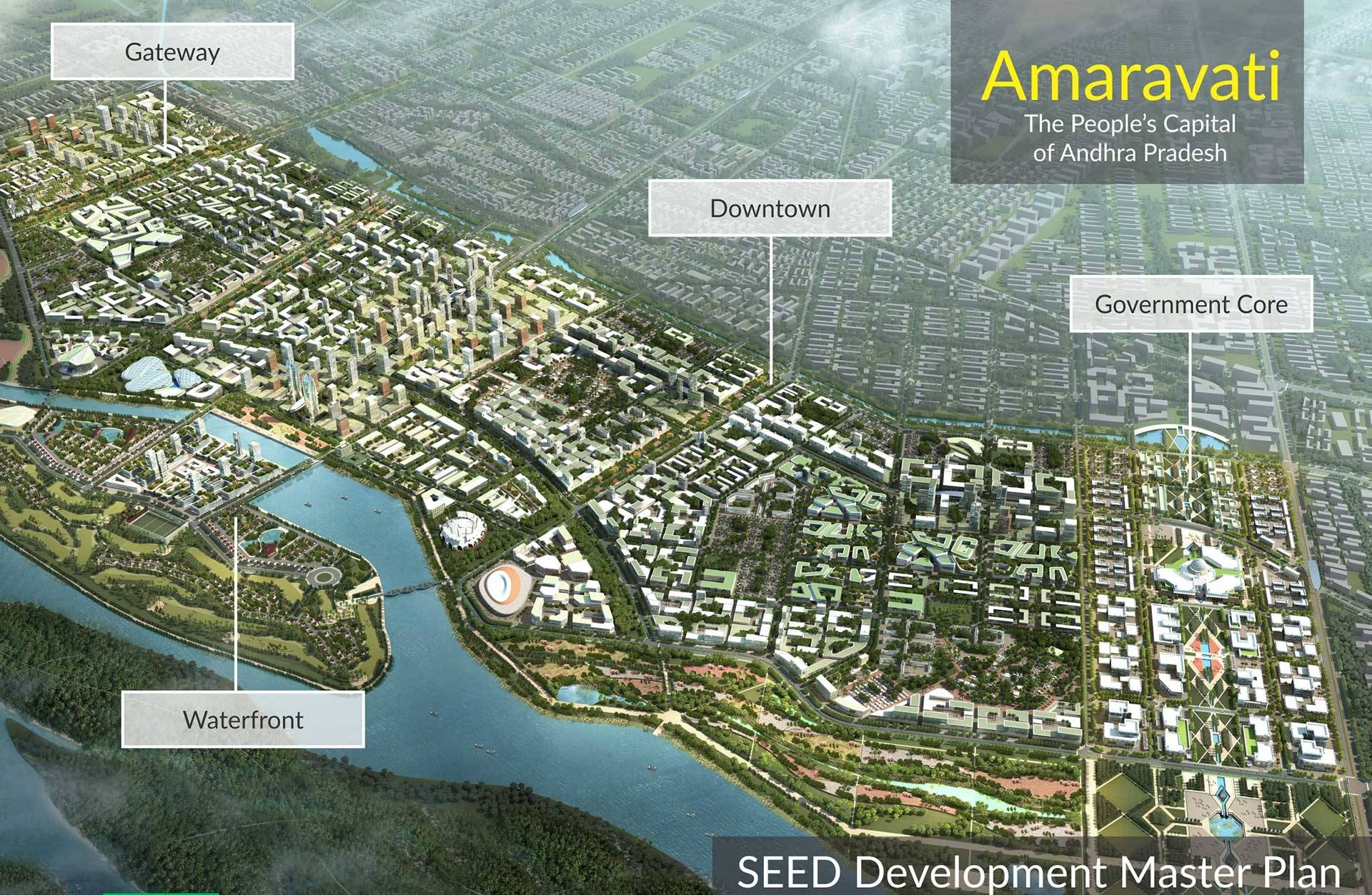The government of Andhra Pradesh proposed Amaravati as a Smart City that would also be the capital of Andhra Pradesh. Bifurcation of states is a long-standing concept to help ease the state government’s administrative jurisdiction, as well as to maintain peace and harmony across the land. In the Indian context, the country has been experiencing state bifurcations ever since it was a British colony. The “Partition of Bengal” is one of the earliest examples of land bifurcation in the Indian subcontinent. Such redefinition of state boundaries therefore demands the creation of new amenities, structures, government bodies, and much more.
In the past decade, the bifurcation of Andhra Pradesh is one such instance that posed the opportunity to create a futuristic city – Amaravati. As Andhra Pradesh split into two states, one part continued to be Andhra Pradesh while the other half was Telangana. While Hyderabad was the then capital city of Andhra Pradesh, it was geographically located in the area that formed Telangana. Hence, with Andhra Pradesh having no capital city, Amaravati was proposed. To create a people-centric city, the government of Andhra Pradesh thus declared Amaravati as the capital of Andhra Pradesh in April 2015.
Ideation of Amaravati’s Urban Design
With the vision of creating a smart city built on the principles of sustainability and liveability, Amaravati anticipated to be the happiest city globally. Amaravati originally intended to be themed around administration, justice, tourism, finance, knowledge, electronics, health, sports, governance, and media.
Proposed to have a strong urban grid, this new administrative capital of Andhra Pradesh thus structures the city plan. Since sustainability constitutes the core principle of Amaravati’s urban design, the planners planned a stretch of the lush green belt that goes across the length of the city. The landscape stretch provided an environment-friendly design strategy where at least 60% of the city’s area is occupied by water or greenery.

Along with planning buildings of urban significance, a Capitol Complex was also proposed at the city centre amidst the landscape belt. It included the development of key government buildings such as the Legislative Assembly, Secretariat buildings, State Administrative Offices, and the High Court complex. The British Architecture and Design firm Foster + Partners was approached to design the master plan for Amaravati’s Capitol Complex. The city was proposed to be spread across a vast land of 217 square kilometres. The proximity of Amaravati to River Krishna puts it in the position of benefiting from an abundant water supply. The Capitol Complex was situated at the heart of the city, spread over a rectangular site measuring 5.5 kilometres x 1 kilometre.
Proposed Design of Amaravati

Affectionately known as “The People’s Capital”, Amaravati was proposed to be designed with world-class standards of sustainability and technology. The urban transportation plan of the city was planned to include e-vehicles, water taxis, and cycle tracks. The transit plan was thus proposed to encourage walkability by providing shaded streets and squares throughout the city. A mixed-use quarter was also planned along the southern edge of River Krishna. This densely-planned area would therefore have 13 urban plazas that represent the 13 districts of Andhra Pradesh.
Amaravati’s Capitol Complex
The Capitol Complex of Amaravati was designed to set a distinct identity for the precinct through architecture and set an example for future urban planning projects.
The Legislative Assembly was planned to be centrally located in the city within a freshwater lake. The assembly design proposed by Foster + Partners is based on Vastu principles. The building has a square layout with its public and ministerial entrance planned from north and east respectively. The assembly chamber for hosting ministerial debates is located in the south-west corner of the building. The council hall is planned in the north-east, with administrative offices occupying the north-west direction.

Aligned with the principles of Vastu, the centre of the Capitol Complex buildings is kept void and provides for a courtyard. The courtyard is accessible to all and serves as a gathering space for discussions. The building is vertically connected via a spiral ramp which leads people to the cultural museum on the floor above. The design team topped the building with a conical roof that extends into an overhanging canopy, which also helps in inviting a cool breeze to the building. The cone-shaped roof resembles an “A” for Amaravati, which is a prominent feature of the city’s logo.
The High Court Complex
The High Court Complex in Amaravati is located off-centre from the city centre in the city’s layout. The design team planned the building in concentric layers. The design team planned rooms around the courtyard. The most publicly accessible parts of the building located on its outer edges. Planned intimately, the inner areas of the building are for the Chief Justice’s court and other private chambers. The high court building has a courtyard and a roof garden. These thus allow the building to be planned with an indoor-outdoor approach.

Ancient Buddhist Stupas in India inspired the stepped roof of the high court. The deep overhangs of the roof similar to the legislative assembly also provide shade. They also enable the build to be naturally ventilated.
“The design brings together our decades-long research into sustainable cities, incorporating the latest technologies that are currently being developed in India”, said Norman Foster on his plan for Amaravati. With such ambitious plans for a futuristic city, the fate of Amaravati lies in jeopardy because of the state’s alarming political situation.
The Current State of Affairs
In July 2020, the legislative assembly was proposed with the idea of having 3 capital cities namely Amaravati, Kurnool, and Visakhapatnam. The Decentralisation and Inclusive Development of All Regions Act, 2020 passed by the Andhra Pradesh Legislative provisioned Visakhapatnam as the executive capital while Amaravati and Kurnool became the legislative and judicial capitals, respectively.
This implies that the infrastructure and building construction works progressing in Amaravati have been brought to a screeching halt. The half-built structures are now falling prey to encroachments and dilapidation. People now consider it to be a “ghost city”. With such acute developments in the planning of Amaravati, it is only for the future to thus tell us whether Amaravati meets its glorified fate.
Sources:
- Amaravati masterplan
- Amaravati Government Complex masterplan by Foster + Partners
- Foster + Partners to masterplan new sustainable city in India
- Foster + Partners Finalised The Design Of Amaravati Capitol Complex
- Amaravati was going to be the pride of Andhra. It is now a ‘ghost city’
Disclaimer: The information contained herein have been compiled or arrived at, based upon information obtained in good faith from sources believed to be reliable. The opinions expressed within the content are solely the author’s and can be subject to change. The image featured in this article is only for illustration purposes. If you wish the article to be removed or edited, please send an email to editor@biltrax.com
Discover more from Biltrax Media, A Biltrax Group venture
Subscribe to get the latest posts sent to your email.






















